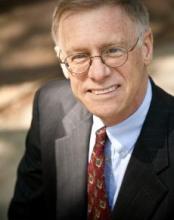Mr. Kamensky is an Emeritus Senior Fellow with the IBM Center for The Business of Government and was an Associate Partner with IBM's Global Business Services.
During 24 years of public service, he had a significant role in helping pioneer the federal government's performance and results orientation. Mr. Kamensky is passionate about helping transform government to be more results-oriented, performance-based, customer-driven, and collaborative in nature.
Prior to joining the IBM Center, he served for eight years as deputy director of Vice President Gore's National Partnership for Reinventing Government. Before that, he worked at the Government Accountability Office where he played a key role in the development and passage of the Government Performance and Results Act.
Since joining the IBM Center, he has co-edited six books and writes and speaks extensively on performance management and government reform. Current areas of emphasis include transparency, collaboration, and citizen engagement. He also blogs about management challenges in government.
Mr. Kamensky is a fellow of the National Academy of Public Administration and received a Masters in Public Affairs from the Lyndon B. Johnson School of Public Affairs, in Austin, Texas.





